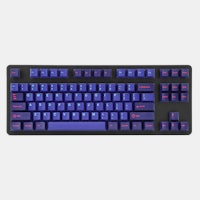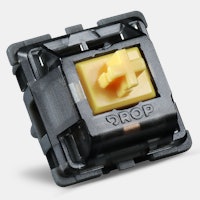Click to view our Accessibility Statement or contact us with accessibility-related questions






Leveraging Layers
Making your keyboard work for you!
When shopping for a new keyboard you may have heard that you want to have a keyboard that is compatible with QMK, VIA, or VIAL. These are three different programs that allow you to modify the assigned keys on a keyboard. This is one of the major advantages of using a custom mechanical keyboard and one that I feel is criminally underused. Making small adjustments to your layers can allow you to tune your keyboard to your exact specifications. For example, I always swap the position of left control and caps lock. I’ve always felt that caps lock was a waste of such a valuable space. For those of you that read some of my earlier articles, you’ll know that my first mechanical keyboard was a Happy Hacking Keyboard. As you’ll see later on, my personal layouts are heavily inspired by this keyboard, even going so far as to mapping my backspace to the pipe key on nearly every single physical layout, yes including tenkeyless. Today, I hope you can take away some cool tips and tricks in modifying your layouts to improve your keyboard experience. We’ll primarily be looking at VIA as the interface.
For those that choose to use smaller form factors, having multiple layers allows our keyboards to interface as much larger boards. Let’s start where my journey did, the HHKB, specifically the Pro 2.

















search
close
Sort by: Newest
keyboard_arrow_down
HubertTheMad
205
Keyboard Club Member
Sep 18, 2024
Thanks for the write up! I've always found it an interesting conversation starter regarding smaller than full size keebs when someone asks "what do you do if you need (insert part of board)!?", especially since I love 60s like you.
PRODUCTS YOU MAY LIKE
Trending Posts in Mechanical Keyboards
leoakaleo
callboy job chennai
Have you ever considered a profession that blends excitement, charm, and independence? Call boy jobs in Chennai present a unique opportunity for those ready to explore a different career path. With...
Dec 30, 2024
nienow.donny
Chill Out with Fun: Dive into Papa's Freezeria Game!
Are you ready to take a break from reality and indulge in a delicious virtual ice cream adventure? Welcome to the sweet world of Papa's Freezeria! In this delightful game, you'll transform into a master ice cream chef, serving up yummy concoctions to your quirky customers while managing your very own ice cream shop. Grab your aprons, unleash your creativity, and get ready to scoop, blend, and serve! What is Papa's Freezeria? Papa's Freezeria is a fun-filled cooking simulation game where players run an ice cream parlor by preparing and serving delicious treats. From building the perfect sundae to creating refreshing milkshakes, this game brings the art of ice cream making right to your fingertips! But hold on—having fun isn’t just about tasty flavors; it’s also about mastering the art of multitasking and keeping your customers happy. How to Play: Your Guide to Delicious Success! Step 1: Get Started Getting started is easy! You can choose between various characters, each with their...
Dec 30, 2024
MoreBlcvk
Can i someone support me in fixing my Drop Alt keyboard?
I havent used this keyboard in months. When I plug it in, it turns on and turns off. You would assume there is a short in the cord but I know there's not because I can use the cord with a different keyboard. So do you think its a firmware issue or a short inside the keyboard? Either way I want to fix it. Any suggestions or tips & tricks?
Dec 29, 2024
CapnKitten
Solid ABS Keycaps
DCX quality is pretty good. Similar sound signature and a smoother texture to GMK. Not a dig at either, just a difference. Ignore the missing keycap, it's a switch issue.
Dec 29, 2024

excelsiorcarslondon
Why Cab Service Near Me is Essential in Today’s Fast-Paced World
In today’s world, convenience is key. Whether you're commuting to work, heading to an important meeting, or enjoying a night out, having access to a reliable london city airport transfers is indispensable. Companies like Excelsior Cars London are redefining what it means to travel conveniently and efficiently. The Importance of Local Cab Services When you're in a hurry or unfamiliar with your surroundings, searching for a “cab service near me” can be a lifesaver. Local cab services bridge the gap between affordability and reliability, providing quick solutions for transportation needs. Unlike app-based ride-sharing platforms, traditional cab services often offer: Instant Availability: No long wait times during peak hours. Knowledgeable Drivers: Drivers familiar with local routes and shortcuts. Personalized Service: A customer-focused experience that prioritizes your comfort. Excelsior Cars London, for example, ensures passengers experience stress-free travel with their fleet of...
Dec 27, 2024














